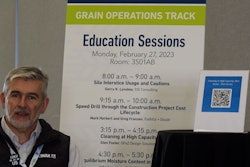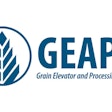
At the recentGEAPS Exchangein Kansas City, Brett Buchanan, CFO forBulk Conveyors Inc.(BCI), spoke on the company's new practice of placing durable, laser-etched stickers with QR codes on the pieces of equipment it manufactures. BCI presented information on these QR codes during an Innovation Station and theIdea Exchange.
When scanned, these QR codes bring up all the data installers, maintenance staff and regular employees need to keep that piece of equipment functioning at peak performance. The QR codes link to a secure webpage designed for that individual piece of equipment.
QR codes no longer need a dedicated phone application to read. Most modern phones can use their phone's camera to scan. During the Covid-19 pandemic, QR codes became commonplace as restaurants and other businesses needed to avoid physical paper handouts.
The familiarity from the COVID-19 pandemic meant that everyone in the audience for Buchanan's presentation could quickly scan the QR code he offered as an example without aid or trouble.
BCI的QR码印在高度耐用的圣ickers that can reset the wear and tear commonly found in a grain mill or feed mill and stay adhered to equipment. It can even withstand the elements and works well on hard-to-reach outdoor equipment.
This can also make equipment safer to inspect and measure. If a sticker is damaged, BCI will send a new one. They can also print QR codes for the facility's older BCI equipment.

.jpg?auto=format%2Ccompress&crop=faces&fit=crop&h=48&q=70&w=48)




















